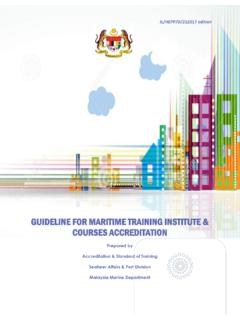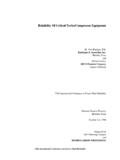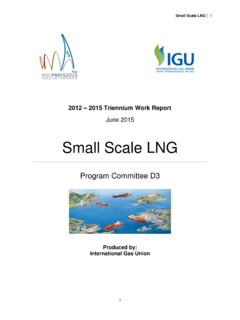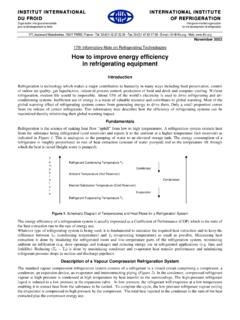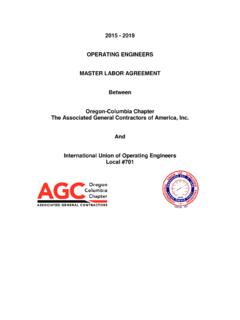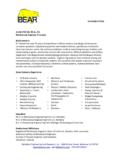Transcription of HSC CODE 1994 EDITED - Marine
1 HSC code - international code of Safety for High Speed Craft, 1994 Resolution (63) Amended by Resolution (74) Amended by Resolution (79) Amended by Resolution (82) Amended by Resolution (84) The Maritime Safety Committee . RECALLING Article 28(b) of the Convention on the international Maritime Organization concerning the functions of the Committee, . RECALLING FURTHER resolution (X) by which the Assembly, when adopting on 14 November 1977 the code of Safety for Dynamically Supported Craft (DSC code ) for craft such as hydrofoil boats and air-cushion vehicles which were increasingly being introduced in international transport, authorized the Maritime Safety Committee to amend the DSC code as may be necessary.
2 RECOGNIZING the continual development of novel types and sizes of high speed craft, which are not necessarily dynamically supported, cargo craft, passenger craft carrying larger numbers of passengers or operating at greater distances from places of refuge than permitted by the DSC code , . RECOGNIZING FURTHER that improvements of maritime safety standards since the adoption of the DSC code are required to be reflected in the provisions for the design, construction, equipment and operation of high speed craft in order to maintain certification and safety equivalence with conventional ships, . NOTING that the SOLAS Conference to be held from 17 to 24 May 1994 will be invited to adopt amendments to the 1974 SOLAS Convention which, inter alia, include a new chapter X on Safety measures for high speed craft, to make the provisions of the international code of Safety for High Speed Craft (HSC code ) mandatory under that Convention for all such craft constructed on or after 1 January 1996.
3 HAVING CONSIDERED at its sixty-third session the text of the proposed HSC code which has been developed following a thorough revision of the DSC code , ADOPTS the HSC code , the text of which is set out in the Annex to the present resolution; NOTES that under the proposed chapter X of the 1974 SOLAS Convention, amendments to the HSC code shall be adopted, brought into force and shall take effect in accordance with the provisions of article VIII of that Convention other than chapter I; REQUESTS the Secretary-General to transmit a copy of the present resolution together with the text of the HSC code to all Members of the Organization and to all Contracting Governments to the 1974 SOLAS Convention which are not Members of the Organization; RECOMMENDS Governments to apply the code on a voluntary basis in respect of craft constructed between the adoption of this resolution and the entry into force of the amendments to the 1974 SOLAS Convention referred to above as may be adopted by the 1994 SOLAS Conference.
4 Annex - international code of Safety for High Speed Craft, 1994 Preamble 1. The international conventions ratified in respect of conventional ships and the regulations applied as a consequence of such conventions have largely been developed having in mind the manner in which conventional ships are constructed and operated. Traditionally, ships have been built of steel and with the minimum of operational controls. The requirements for ships engaged on long international voyages are therefore framed in such a way that, providing the ship is presented for survey and a ship safety certificate is issued, the ship may go anywhere in the world without any operational restrictions being imposed. Providing the ship is not involved in a casualty, all that: is needed is that it is made available to the Administration for the purpose of a satisfactory resurvey before the ship safety certificate expires and the certificate will be reissued.
5 2. The traditional method of regulating ships should not be accepted as being the only possible way of providing an appropriate level of safety. Nor should it be assumed that another approach, using different criteria, could not be applied. Over a long period of years, numerous new designs of Marine vehicles have been developed and have been in service. While these do not fully comply with the provisions of the international conventions relating to conventional ships built of steel, they have demonstrated an ability to operate at an equivalent level of safety when engaged on restricted voyages under restricted operational weather conditions and with approved maintenance and supervision schedules. 3. This code has been derived from the previous code of Safety for Dynamically Supported Craft (DSC) adopted by IMO in 1977.
6 The code recognized that safety levels can be significantly enhanced by the infrastructure associated with regular service on a particular route, whereas the conventional ship safety philosophy relies on the ship being self-sustaining with all necessary emergency equipment being carried on board. This revised code has been prepared in recognition of the growth in size and a type of high speed craft now existing and is intended to facilitate future research and development of fast sea transportation in order that they may be accepted internationally. 4. The safety philosophy of this code is based on the management and reduction of risk as well as the traditional philosophy of passive protection in the event of an accident.
7 Management of risk through accommodation arrangement, active safety systems, restricted operation, quality management and human factors engineering should be considered in evaluating safety equivalent to current conventions. Application of mathematical analysis should be encouraged to assess risk and determine the validity of safety measures. 5. The code takes into account that a high speed craft is of a light displacement compared with a conventional ship. This displacement aspect is the essential parameter to obtain fast and competitive sea transportation and consequently this code allows for use of non-conventional shipbuilding materials, provided that a safety standard at least equivalent to conventional ships is achieved.
8 6. To clearly distinguish such craft, criteria based on speed and volumetric Froude number have been used to delineate those craft to which this code applies from other, more conventional, craft. 7. The code requirements also reflect the additional hazards which may be caused by the high speed compared with conventional ship transportation. Thus, in addition to the normal requirements including life-saving appliances, evacuation facilities, etc., provided in case of an accident occurring, further emphasis is placed on reducing the risk of hazardous situations arising Some advantages result from the high speed craft concept, the light displacement provides a large reserve buoyancy in relation to displacement, reducing the hazards addressed by the international Load Line Convention.
9 The consequences of other hazards such as of collision at high speed are balanced by more stringent navigational and operational requirements and specially developed accommodation provisions. 8. The above-mentioned safety concepts were originally reflected in the code of Safety for Dynamically Supported Craft. The development of novel types and sizes of craft has led to the development of pressures within the maritime industry for craft which are not dynamically supported cargo craft, passenger craft carrying larger numbers of passengers or operating further afield than permitted by that code to be certified according to those concepts. Additionally, improvements of maritime safety standards since 1977 were required to be reflected in the revisions of the code to maintain safety equivalence with conventional ships.
10 9. Accordingly, two differing principles of protection and rescue were developed. 10. The first of these recognizes the craft which were originally foreseen at the time of development of the DSC code . Where rescue assistance is readily available and the total number of passengers is limited, a reduction in passive and active protection may be permitted. Such craft are called "assisted craft" and form the basis for "category A passenger craft" of this code . 11. The second concept recognizes the further development of high speed craft into larger craft. Where rescue assistance is not readily available or the number of passengers is unlimited, additional passive and active safety precautions are required. These additional requirements provide for an area of safe refuge on board, redundancy of vital systems, increased watertight and structural integrity and full fire-extinguishing capability.


